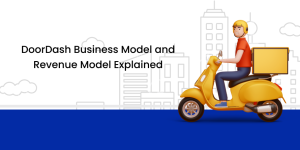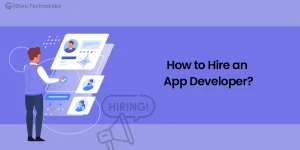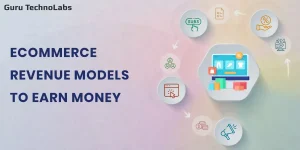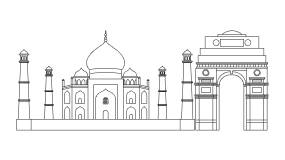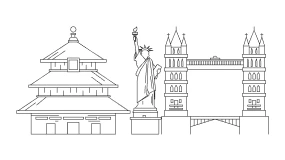How to Develop a Food Delivery App | Tips, Cost, and Steps
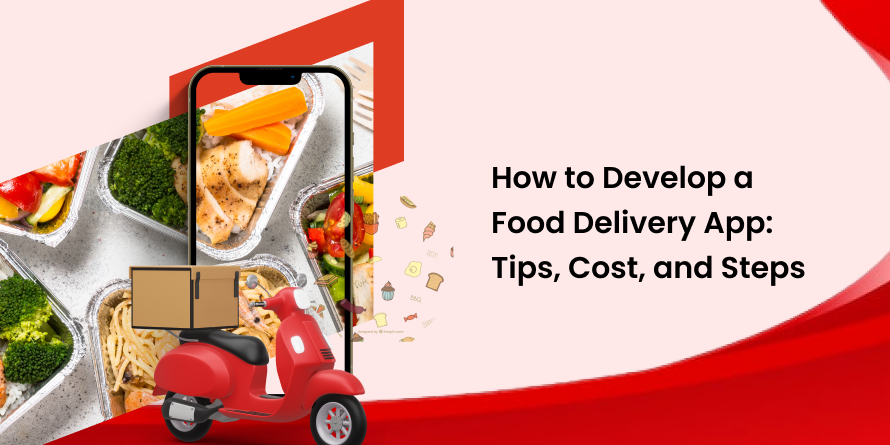
Are you looking to start an online food delivery business like GrubHub, Doordash, or Zomato? If so, you are in the right place.
Over time, the only substantial reason behind an exponential increase in mobile app usage is the increasing penetration of smartphones, which people use to do all their regular jobs. Whether ordering food online, shopping online, paying bills, or checking reviews, there is an app for everything. With just a couple of taps on your smartphone, you can have everything you need, including food and groceries, delivered to your doorstep without standing in a long queue at supermarkets.
As more people seek comfortable ways to order food, the demand for efficient and user-friendly food delivery app development continues to rise. As per the stats, in 2024, with more than 52 million downloads, Zomato was the most downloaded food delivery app worldwide. It shows clearly that such apps have a lot of potential.
If you’re impressed by the figures above and considering entering this profitable market, it’s time to partner with an on-demand app development company and never look back. In this blog, we’ll analyze the market share of food delivery apps, the development process, costs, and much more. So, let’s dive right in!
Define Food Delivery App
The name says it all. A food delivery app is similar to other online shopping apps but in a different category. These apps can be considered in the quick commerce or hyperlocal delivery niches. Users can browse restaurants and add dishes to their carts. In addition to checking menus, users can also check costs, reviews, and much more to make informed decisions.
These apps provide real-time tracking, personalized recommendations, and multiple payment options. Using a food delivery app saves valuable time by eliminating the need to visit a physical restaurant, wait in a long queue for a turn, and cross traffic to return home.
Food Delivery App Statistics to Know in 2025
Online food delivery has become a ruling force, and as a restaurant owner, staying connected to the latest trends and technologies is the secret sauce to success. Today, diners embrace the ease and convenience of mobile apps and online ordering platforms.
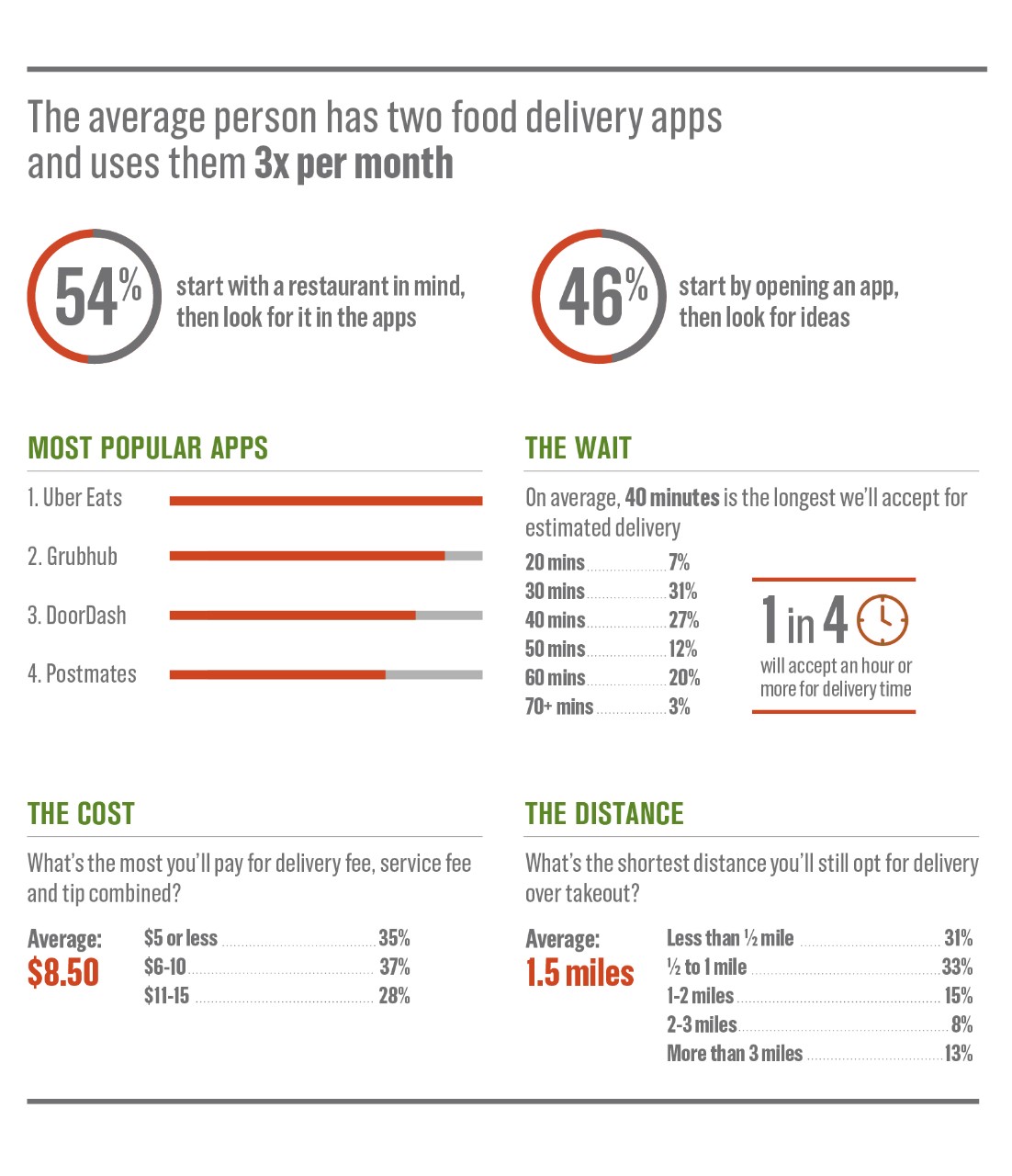
Source: US Foods
Check out the market share and predictions below to see just how colossal the food delivery market is.
- Food delivery services will grow from $3.7 billion in 2023 to $90.3 billion by 2030 at a CAGR of 13.4%.
- Experts anticipate mobile apps as the most used channel for online food delivery due to their user-friendliness, accessibility, and real-time order tracking.
- As smartphone use and internet access rise, China’s online food delivery company users grew from 418.83 million in 2020 to 544.45 million in 2023; the industry is booming.
- A report by Doordash revealed that in 2023, more than 77% of American consumers ordered food online. This surge is further fueled by smartphone usage and broad internet connectivity.
- User penetration in online food delivery is anticipated at 37.2% in 2023.
Compared to other countries, China and the USA lead in GMV, and Chinese markets have already established themselves as mature. Considering the above factors, the food delivery market will likely continue to grow in the years to come, making it a promising investment opportunity for budding entrepreneurs.
How Does the On-demand Food Delivery App Work?
Simply put, food delivery app development involves building an app that allows users to order their favorite dishes and have them delivered to their doorsteps. But to enter the market, you must understand the process in detail. So, let’s have a look at the process from the customer’s point of view:
- Customers must sign up or log in using the food delivery application. After signing up, they can browse different restaurants.
- After checking menus and ratings, users can add dishes to the cart.
- Review the order, apply coupons or discounts if available, and perform the checkout process.
- After placing an order, the restaurant receives the order and starts preparing for it.
- Once the order is ready to be dispatched, the restaurant owner contacts the nearby “delivery provider” to pick it up.
- The delivery provider accepts or rejects the order, picks up the order from the restaurant, and starts navigating to the user’s location.
- Once the food gets delivered, the provider asks customers to rate and review the service based on overall experience.
Ready to Empower Your Food Delivery App Development Journey?
Bring your food delivery app vision to life with our experts. Start today!
Types of Business Models In Food Delivery App Development
Do you know how the food delivery app works, but have you ever thought about what type of food delivery app model to choose from? If you are unaware of what your app is about and what business model you want to follow, you are just aiming an arrow in the dark and wasting resources. For instance, analyzing the Doordash business model can provide valuable insights into optimizing logistics and streamlining restaurant partnerships.
Here are the food delivery app business models to choose from before you start working on them.
| Food Delivery Business Model | Description |
|---|---|
| Aggregator Business Model | This business model for delivery service providers with restaurants to dispatch online orders |
| Order & Delivery Business Model | Three main stakeholders are involved in this model:Restaurant owners, the admin, and delivery providers |
| Integrated Business Model | In this model, both restaurants and the admin take care of delivery |
| Inventory Business Model | For food delivery companies, there are two primary categories of inventory business models: Kitchen models and virtual kitchen model |
The Order-Only Model
The order-only model is ideal for the initial generation of on-demand meal delivery services. It allows users to quickly connect with nearby restaurants.
This platform-to-consumer model will enable your online platform to connect your patrons with nearby eateries. This methodology facilitates successful order placement and delivery for local eateries and customers.
Delivery Service Aggregators
In this food delivery business model, deliveries or logistics are handled the same way as in the previous business model. The app owners accept online orders and deliver them to users. This is the most popular model, as restaurants and eateries don’t have to worry about managing deliveries and logistics.
Fully Integrated Food Delivery Model
Also known as the full-stack model, this integrated food delivery model involves the platform owner managing everything from preparing meals to delivering the food to customers. Meal delivery startups usually partner with chefs to serve this specific area.
Cloud Restaurant Model
If you are about to launch your food delivery business, the cloud restaurant is the perfect choice.
This model doesn’t require a large setup. Instead, customers’ orders go directly to the central kitchen, where the food is prepared. The delivery provider then delivers the food to the customers.
Which Food Delivery Business Model Should You Choose?
It’s critical to distinguish between the four models.
This model doesn’t require a large setup. Instead, customers’ orders go directly to the central kitchen, where the food is prepared. The delivery provider then delivers the food to the customers.
- The initial model will have a delivery boy and a restaurant.
- Under the second model, delivery drivers, eateries, and the admin will all operate independently. After the order is sent to the restaurant, the delivery worker will convey it to the customers.
- The third model’s owner will manage everything, including a delivery person and a restaurant. You will be responsible for everything here, including preparing and serving the food.
It is easy to charge restaurant partners a set price to process each order through the app, making this the best option among the several meal delivery business models.
Alternatively, users are charged a delivery fee according to their location. Some restaurants prefer this business strategy because it does not require logistics.
In this case, all distribution services are managed by the app owner.
As a result, eateries only need to worry about cooking; a third party handles everything else.
The three approaches to managing a food delivery service have advantages and disadvantages.
Working with an experienced mobile app development company is essential, as it helps you decide on an effective business strategy and helps you integrate the modern features that allow you to stand out in the crowd.
Step-by-Step Process of Food Delivery App Development
To develop a fully functional food delivery app and make it popular among users, you need something more extraordinary than others. To help you build the best food delivery app, we suggest following the below-mentioned steps:
Find the Problem
Find your niche and target audience before hiring developers for a food delivery app. There are two main types of food delivery businesses:
This model doesn’t require a large setup. Instead, customers’ orders go directly to the central kitchen, where the food is prepared. The delivery provider then delivers the food to the customers.
- Restaurant to Consumera
- Food Aggregators
The primary goal of the restaurant-to-consumer (R2C) model is to deliver meals from restaurants to customers. On the other hand, food aggregators collaborate with eateries and give them access to an online platform so they may expand their clientele. Knowing your ideal customers before working with technology partners can help determine what is relevant to your users. This knowledge can help you set marketing objectives and commercial plans more effectively.
Research Target Market
Understanding your target market is essential for creating a successful food delivery app. Once you know who will use it, it is simple to make a meal delivery app that best suits the demands of those consumers.
The target market may be broad, like pizza enthusiasts, or specific, like gluten-free raw vegans. Create a target customer profile by elucidating the following details and using demographic parameters to gain a clear image of the target audience:
- Social attributes such as age, nationality, gender, and income
- What possible customer issue could your app resolve?
- What emotions will users of your application experience?
- Why should users choose your app over competitors?
You will clearly understand the target market if you address these issues.
Decide the Features You Want to Integrate
You may already know what kind of food delivery app you want to create.
But hold on!
How would you guarantee that your "Food Delivery App" will be used by your intended audience? What features should your mobile app for food delivery have? Remember that your app is useless if it lacks modern features and functionalities.
Food delivery apps connect four stakeholders: customers, restaurants, admin, and delivery providers. Here, we have listed the features necessary to integrate and deliver a seamless experience.
| Customers | Restaurants | Delivery Provider | Admin |
|---|---|---|---|
| Sign up | Register | Register/Login | Restaurant Management |
| Login with Social Media Profiles | Add/Edit Restaurant Details | Order Management | Delivery Management |
| Push Notification | Notifications | Map and Navigation | Analytics |
| Order History | Accept/Reject Orders | Scheduling | Reports |
| Save Address | Order Management | Edit profile | Real-time Tracking |
| Repeat Orders | User Profile Management | View Earnings | Manage Customers |
| Search Restaurants | Add/Edit Menu | Withdraw Payment | Dashboard |
| Order Placement | Analytics & Insights | View TIP Amount | Control Over the Operations |
| Add to Cart | Real-time Tracking | Ratings and Reviews | Add/Remove Customers |
| Multiple Payment Options | Delivery Management | Fleet Management |
Select the Technology Stack
The next step in developing a food delivery application is to define the tech stack and create a minimal viable product (MVP). This typically includes decisions on programming languages, databases, servers, APIs, and other development components.
Here is the detailed tech stack for an ideal food delivery app, which every development company can use.
- Mobile Platforms: Android and iOS
- Programming Languages: Kotlin for Android and SwiftUI for iOS
- Location: Google Place API, Google Maps, MapBox Geocoding API
- Database: PostgreSQL, Firebase
- Cloud Environment: Azure, AWS
- Payment Gateways: Braintree, PayPal, Stripe, etc.
- Utilities: Twillio, Google SDK, and Facebook SDK
Test and Launch
It’s time to test the food delivery app before launching it after its development. It is a crucial stage of development that aids in spotting possible mistakes and faults and fixing them before they impair the program’s functionality.
Now that the research, development, and testing are complete, the most exciting stage of developing a meal delivery service is the release stage. However, the software should be released with careful preparation. Launching the app without a backup for quick help may result in expensive errors.
Try to launch your food delivery app, adhering to all the guidelines to reap its benefits.
Cost to Develop a Food Delivery App
Several variables affect the total cost of creating an on-demand food delivery app, including its features, complexity, third-party integrations, and the appropriate mobile app development process.
Now, let’s understand the other influencing factors as well:
- App features and functionalities
- Project Analysis and Scope Statement
- App Platforms
- App Deployment
- Security
- Development Team’s Location
There’s no ballpark figure, but the cost depends on certain factors, including features, the app’s complexity, the technology stack, and the number of developers and designers you need.
However, depending on the previously mentioned parameters, the average cost of developing a food delivery app could range from $10,000 to $50,000. To add basic and complex features like real-time order tracking, in-app chat assistance, restaurant management systems, loyalty programs, secure payment gateways, dark mode, and more, always pick the top food delivery app development company like Guru TechnoLabs.
Final Words
Meal delivery apps allow you to order food quickly and easily online. Simply tap or click to have it delivered straight to your door. The market for mobile food delivery apps will remain open for business indefinitely. To guarantee your app’s success, consider its user interface, navigation, customer support system, payment integration, etc.
We at Guru TechnoLabs have the know-how to create excellent food delivery apps that satisfy your unique demands. We may develop a complex delivery app with all the bells and whistles or a basic app with only the most essential functionality.
Contact us today and revolutionize your food delivery business.
Frequently Asked Questions
Given the ongoing expansion of delivery service providers and consumer demand for quick and easy meal options, the food delivery sector appears to have a bright future. The food delivery business is anticipated to expand as more restaurants offer delivery services and online ordering gains traction.
Food delivery apps' complexity, features, and development resources affect the time it takes to build them. On average, creating a fully functional app can take several months. Gathering requirements, designing UI/UX, programming, testing, and deploying are common steps in the development process.
Many businesses decide to begin by creating an MVP. By developing a minimum viable product, you can test your idea with the least financial risk. Before investing in building a complete product, get feedback from real users and implement it.
Food delivery apps earn money through delivery fees, subscription models, partner commissions, in-app advertisements, data monetization, and affiliate marketing.
The major players in the food delivery market are Doordash, GrubHub, Zomato, Talabat, UberEats, etc.



